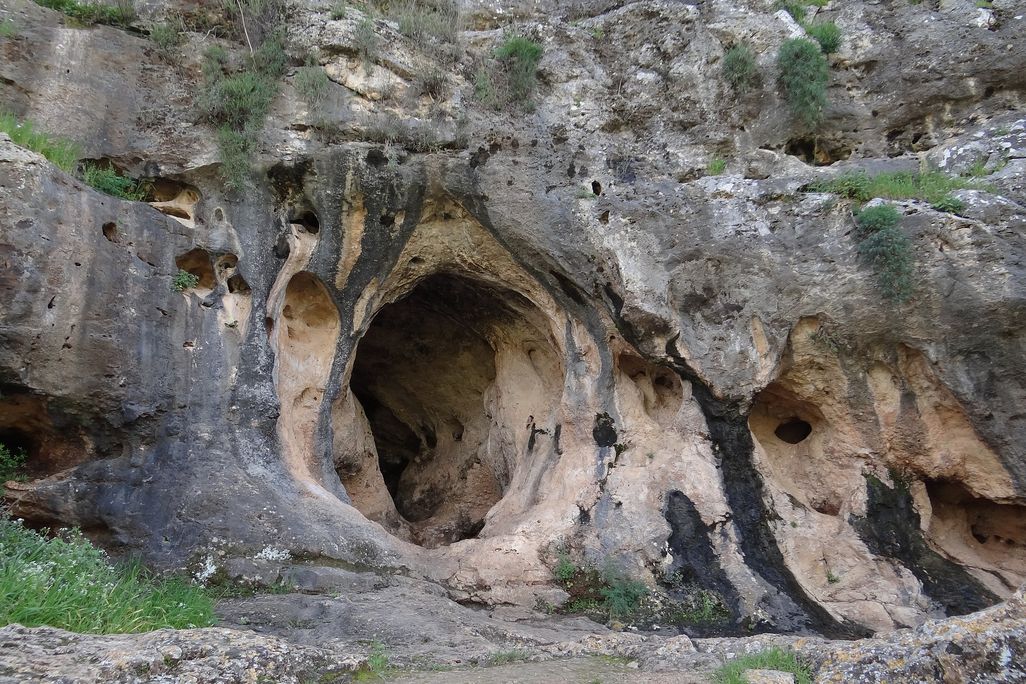A Child’s Skull That Has Long Confounded Archaeologists Might Be a Human-Neanderthal Hybrid, Study Suggests
According to new CT scans and models, parts of the 140,000-year-old skull resemble those of modern humans, while the jaw appears to be more similar to those of our extinct relatives

In 1931, archaeologists discovered the 140,000-year-old remains of a child, among other individuals, in Skhūl Cave on Israel’s Mount Carmel. The findings represent the oldest known organized human burial. But there’s a catch—modern humans might not be the only ones responsible.
In a study published last week in the journal L’Anthropologie, researchers re-analyzed fragments of Skhūl I, the name for remains belonging to a likely female child between the ages of 3 and 5. While the individual is currently recognized as an anatomically modern human, Homo sapiens, its classification remains contentious, given that it has some Neanderthal-like features. Now, the new study suggests the child might have been a hybrid—and potentially had one Homo sapiens parent and one Neanderthal parent.
To reach this conclusion, the team conducted CT scans of the child’s neurocranium—the part of the skull that protects the brain—and jaw. They compared the resulting 3D models to remains of other Homo sapiens and Neanderthal children. In short, they found the neurocranium to be more similar to that of a modern human, while the jaw was more akin to a Neanderthal’s.
/https://tf-cmsv2-smithsonianmag-media.s3.amazonaws.com/filer_public/55/2b/552bbb48-9778-494c-b674-8c959e625c1d/fig2_bis.jpg)
“The combination of features seen in Skhūl I may suggest that the child is a hybrid,” the researchers write in the study. “In the Middle Pleistocene, the Levant was the crossroad of gene flows between Indigenous lineages and other taxa from Africa and Eurasia, which is likely the explanation for Skhūl I anthropological.”
Their results align with genetic evidence indicating that modern humans and Neanderthals didn’t just cross paths—they interbred for thousands of years. In fact, some research has suggested Homo sapiens drove Neanderthals to extinction not with violence, but by absorbing them into their population through interbreeding. Regardless of the reason for Neanderthals’ demise, many humans have Neanderthal DNA today.
Need to know: Disappearance of Neanderthals
Neanderthals inhabited Europe and Asia beginning about 400,000 years ago—but by roughly 40,000 years ago, physical evidence of them vanishes from the archaeological record.
Based on the features of the child’s skull, it appears to be “objectively” a hybrid, as study co-author Anne Dambricourt Malassé, a paleoanthropologist at the French National Center for Scientific Research (CNRS), tells Live Science’s Patrick Pester.
“The bones at the base of the skull that position the neck… and the bones of the inner ear (the labyrinth) are typically Homo sapiens,” Malassé adds to History.com’s Dave Roos. “The mandible, on the other hand, is typically Neanderthal—it has no chin, the dental arch is rounded and wide and the part that attaches to the skull base is much less vertical.”
However, Chris Stringer, a paleoanthropologist at the Natural History Museum in London who didn’t participate in the research, is not as convinced that the child was a true hybrid. He tells Live Science that the Skhūl fossils in general, including the skeletons, mostly display features of Homo sapiens, though this doesn’t negate the fact that the fossils might reflect some genetic flow between the human groups.
But another issue continues to trouble even the study authors. It’s the fact that other Neanderthal fossils excavated in the region are significantly younger than the Skhūl Cave child, which is the reason why earlier researchers had originally rejected the hybridization hypothesis, according to the study.
Scientists could finally put the argument to rest if they could get their hands on Skhūl I’s DNA. But “no attempt has ever been made to analyze the DNA of the neurocranium,” Malassé tells Phys.org’s Sandee Oster. “It is sufficiently preserved to allow the removal of bone from the petrous pyramid. But this is destructive, and the skull is unique.”
As such, the paper suggests that, for the time being, the child should be categorized as belonging to a “paleodeme,” or a group of interbreeding individuals at the same place and time, as opposed to a species. In this case, that would be the inhabitants of the Skhūl Cave, forming the “Skhūl paleodeme.”
More broadly, the study raises important questions in regard to prehistoric burials. Namely, it suggests that modern humans may not have been solely behind the earliest known burial practices. “A new chapter opens on both the origins and motivations of these rituals,” the researchers write in the study.
/https://tf-cmsv2-smithsonianmag-media.s3.amazonaws.com/accounts/headshot/Margherita_Bassi.png)
